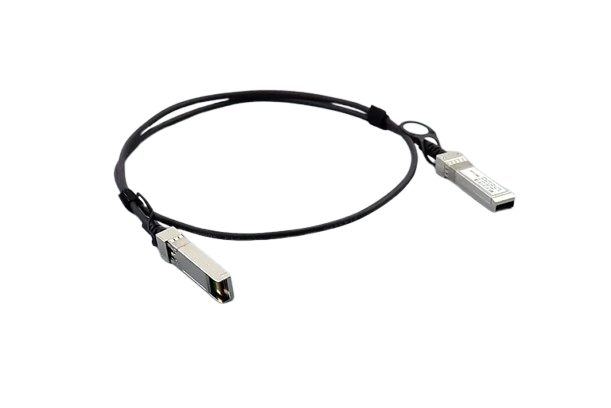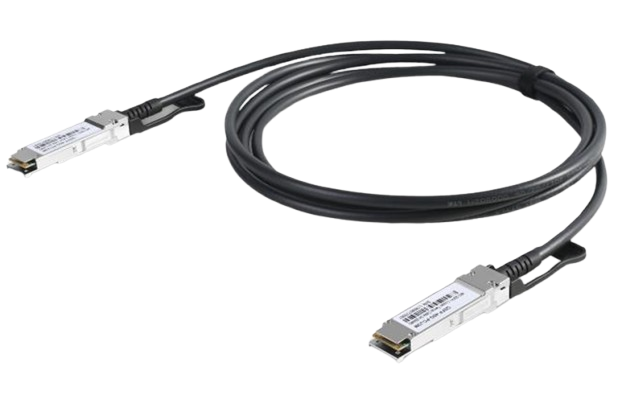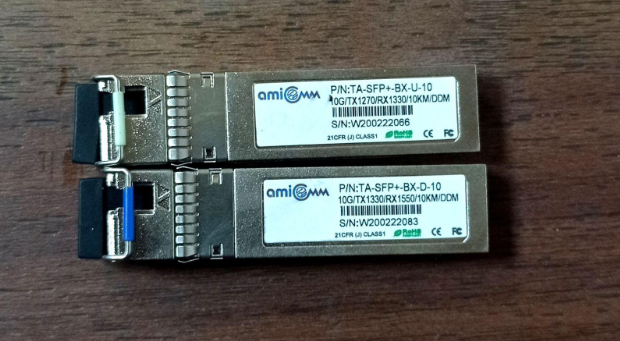A DAC (Direct Attach Copper) cable features a fixed length of twinax copper cable with pre-terminated transceivers on both ends, designed for short-distance, high-speed data connections within a network, typically used in data centers; key specifications include: low latency, high bandwidth, compatibility with various data rates (like 10G, 40G, 100G), limited cable length (usually up to 15 meters), various connector types (like SFP+, QSFP+), and a copper construction with different AWG gauges depending on the desired data rate; DAC cables can be passive (no signal amplification) or active (with electronic components for longer distances) depending on the application.
Key features:
- Short distance connectivity: Primarily used for short connections within a rack or between adjacent racks due to signal attenuation over longer distances.
- High bandwidth: Capable of supporting high data rates like 10Gbps, 40Gbps, and 100Gbps depending on the cable type and connector.
- Low latency: Provides minimal data delay due to the short copper cable length.
- Cost-effective: Generally cheaper than fiber optic cables for short-distance connections.
- Easy installation: Plug-and-play design with pre-terminated connectors.
- Compact size: Smaller and more flexible than fiber optic cables.
- Connector types: SFP+, SFP28, QSFP+, QSFP28 (depending on data rate and application)
- AWG gauge: Typically 24AWG, 28AWG, or 30AWG, with lower AWG indicating thicker cable for higher data rates
- Jacket material: PVC (Polyvinyl chloride)
- Operating temperature range: 0°C to 70°C Cable length: Varies depending on data rate, usually ranging from 0.5m to 15m
- Passive vs Active: Passive DACs are simpler and cheaper but have shorter reach, while active DACs can reach longer distances with the help of electronic amplification
- Function:
Primarily used for high-bandwidth data transmission between devices situated close together within a data center rack, offering a cost-effective solution for short-range connections.
- Construction:
Composed of a twinax copper cable with pre-attached transceiver modules on both ends, which cannot be separated.
- Connector types:
Common connector types include SFP+, SFP28, QSFP+, depending on the data rate required.
- Passive vs Active:
- Passive DAC: A basic DAC with no signal amplification, suitable for very short distances and lower data rates.
- Active DAC: Contains electronics to boost signal strength, allowing for longer reach at higher data rates, but at a higher cost.
Advantages:
- Cost-effective: Generally cheaper than using separate optical transceivers due to the simplified design.
- Easy installation: Plug-and-play connectivity with no need for additional fiber optic components.
- Low power consumption: Compared to optical transceivers, DACs typically use less power.
- No heat produced
- High reliability
- Can be used to connect large amounts of bandwidth
DAC cable limitations
- Transmission modules cannot be removed from the cable, so all DAC cables are a fixed length
A Direct attach cable (DAC) is a type of copper cable that connects data center equipment like servers, switches, and storage devices. DAC cables are cost-effective, efficient, and easy to install.
How DAC cables work
- DAC cables are factory terminated with pluggable transceivers on each end.
- DAC cables can be passive or active. Passive DAC cables don’t condition signals, while active DAC cables have electronics to boost signals.
- DAC cables are available in different lengths, usually up to 15 meters.
- DAC cables are used to connect equipment in racks.



